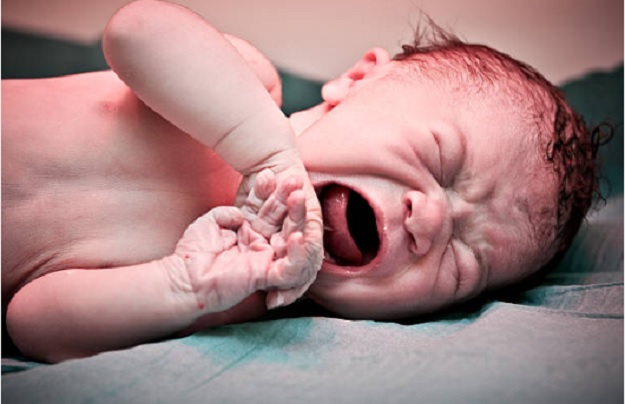Dec 30, 2025
Dec 30, 2025
Who infuses Life into the newborn? Paramatma in Action?
The mystery of the first breath is not confined to hospital labour rooms. Long before the advent of hospitals and long before scientific management of childbirth became a worldwide phenomenon, births have been taking place, from time immemorial, in homes and huts, in barns and sheds and other places of human habitation, each birth coming with a veneer of mystery, an element of magic, in the first breath of the newborn.
How does it happen? Who or what instigates it and infuses Life into a newborn who has just come out of the protective sheath of its mother’s womb into a brave, new, unfamiliar and perhaps unwholesome world?

In the womb every need of the foetus is taken care of by the mother through a specific supply channel, the umbilical cord, which, among other things, ensures the essential supply of oxygen, so crucial for its survival. But once out of that warm, cushiony sac filled with amniotic fluid, the newborn, with the umbilical connection snapped, is on its own to fend for itself as an independent entity in this world. And normally it has to breathe within a very brief while if it is to survive in the new environment.
A newborn is like a sleek new automobile fresh from the factory. Everything in it is magnificently arranged, perfectly connected, impeccably matched and finely tuned. But to move forward it requires the spark of ignition.
And in the case of the newborn that spark of ignition comes from the all-important first breath, not obviously coming from much voluntary effort by that tiny human being, but by the force of air pressure that surges its way to inflate its fledgling lungs. And the pressure (14.70 pounds per sq inch) is such that it helps to push out into the pulmonary and lymphatic systems the fluids that filled the lungs at the time of birth. This is part of a programmed set of motions intended to ready the lungs to receive the oxygen-rich air from the atmosphere.
This groundbreaking work consists of a series of rapid changes immediately before and soon after birth. The constricted, and sometimes traumatic, movement through the vaginal passage helps to squeeze the lungs in such a way that the lung fluids are mostly pushed back to yield place to the incoming air. Hormonal changes are also set in motion to stop any further secretion of lung fluid. After birth, therefore, the lungs of a normal full-term baby are cleared of all fluids and other obstructions and are conditioned to receive oxygen- rich air.
Atmospheric air has a perennial character. It abhors vacuums. The moment the tiny lungs are cleared of all obstructions like fluids, atmospheric air enters the airways in a rush, generally inflating the lungs to the full and giving the newborn the spark of life.
"This first breath can be so strong and dramatic that, in some cases, it bursts a hole in the baby's nascent lungs,” said LiveScience, quoting Dr Jae Kim, Director of Neonatology at the Cincinnati Children's Hospital.
The first inspiration, sometimes described as a gasp, instigates a series of changes in the newborn’s lungs and circulatory system. Once inflated the lungs begin to work on their own, absorbing vital oxygen from the air and moving it into the bloodstream.
While the first influx of air is rapid and deep, the first expiration is generally slow and prolonged because of what is called respiratory braking, which enables the millions of tiny air sacs in the lungs to begin their intended work.
Dr Kim says it takes about five minutes for a healthy, full-term baby to "pink up." But the transition happens with a single breath. "It's a very magical moment."
The question then is who is the magician wielding the baton in this ever wonderful show of the world? The mother, the doctor, the midwife? All of them do have a share in this great show, but the ultimate magician, undoubtedly, is none other than the Ultimate Life Force enveloping the entire world: the atmospheric air containing elements like oxygen, carbon-di-oxide, and nitrogen, so vital for life on earth, for humans, animals, plant life. It may be called by any name, Paramatma, Brahman, Supreme Self, Super Consciousness or Vishnu or simply atmospheric air.
How does the spark of life from up above reach the tiny newborn? By its own effort the newborn is unlikely to draw in lung-full of air from the atmosphere in its first few breathing attempts, let alone the very first. It has to be the other way round: the atmospheric air bearing down on everyone, that is the Life Force enveloping the universe, reaching out to the newborn to give it the elixir of life.
Or in spiritual terms, it goes from the Supreme Self to the individual Self, establishing a perennial connection in which both are one and the same.
As the Chandogya Upanishad says: This universe consists of what that finest essence is. It is the Reality, it is the Self. You are That.
Tat Tvam Asi
Image (c) istock.com
15-May-2022
More by : P. Ravindran Nayar

|
Thank you, Rajenderji, for the very good and very relevant comment. |

|
HaKarena Bahir Yat SaKarena Viset Punah HaSa Ti Param-Mantram Jivo Japti Sarvada Prana manifests in the living human body as breath though inspiration (Sa) (or Shakti) and expiration (Ha) (or Shiva). Breathing is itself a Mantra, known as the Mantra which is not recited (Ajapa-Mantra), for it is said without volition. |